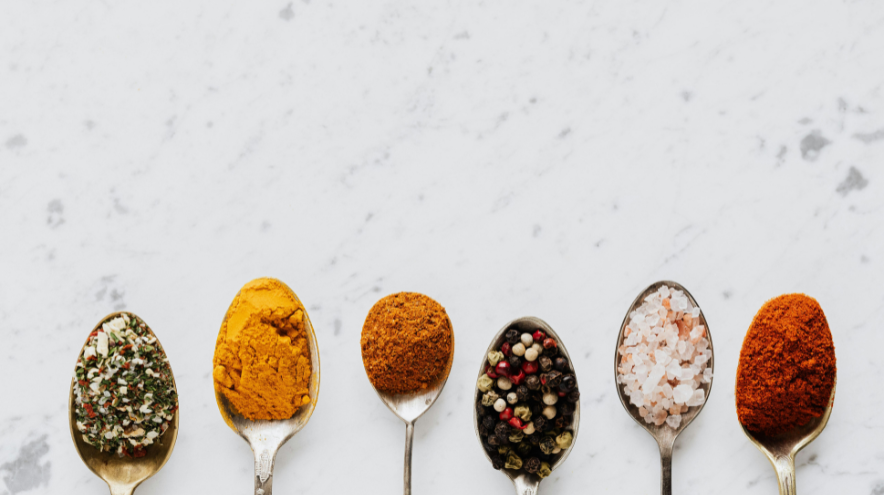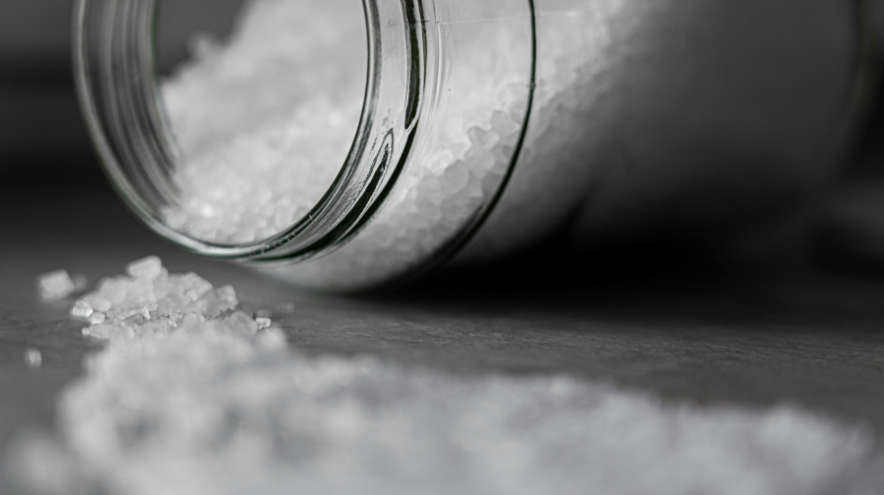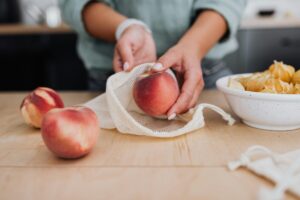Swollen Legs? Avoid These 7 Hidden Culprits

Fluid retention, or the buildup of excess fluid in the body, can lead to discomfort and various health issues. Symptoms like swollen ankles and belly bloating may seem minor, but they can indicate serious conditions, especially in those with heart problems. Dr. Eldrin Lewis, a heart failure specialist, warns, “Fluid buildup can escalate quickly into a life-threatening situation.” (source)
Your diet plays a crucial role in managing these symptoms. Foods high in sodium and sugar can contribute to swelling, making it essential to understand your food choices. Recognizing the culprits in your pantry can empower you to make healthier decisions and reduce unwanted fluid retention. (source)
By adopting mindful eating habits, you can alleviate discomfort and enhance your overall well-being.
Salt-Heavy Foods to Avoid

affiliate link
To effectively combat fluid retention, it’s crucial to identify salt-heavy foods that can exacerbate swelling. Here are three major culprits to watch out for:
Processed Meats: Foods like bacon, salami, and cured meats are notorious for their high sodium content. In fact, a study found the median sodium level in processed meats was 775 mg per 100 g. These foods can account for about 10% of daily sodium intake in Australia, contributing to overall excessive consumption.
Canned Soups and Vegetables: Canned soups can pack a surprising sodium punch. For instance, a single cup of chicken noodle soup contains around 1780 mg of sodium. This far exceeds the recommended daily limit, making homemade versions a healthier alternative.
Fast Food and Restaurant Meals: Meals from fast-food outlets are often high in sodium. The average American consumes about 3,400 mg of sodium daily, which is well above the recommended limit of 2,300 mg. Eating out increases the risk of exceeding these guidelines.
By minimizing these foods, you can help reduce swelling and improve your overall health.
Sugar-Laden Treats to Watch Out For
When it comes to managing fluid retention, being aware of sugar-laden treats is essential. These foods can contribute to swelling in the legs and ankles, making it vital to choose wisely.
Sugary drinks and sodas are among the worst offenders. High in sugar and calories, they can lead to weight gain and other health risks, such as obesity and diabetes. Regular consumption of these beverages can have lasting impacts on your health. For more information on the health implications of sugary drinks, check out the CDC’s guide.
Baked goods and desserts also deserve caution. Items like cakes, cookies, and pastries often contain excessive amounts of sugar. Even seemingly healthier options can be misleading, as they may still harbor hidden sugars. Reading the nutrition labels is crucial to make informed choices. For insights on sugar content in baked goods, visit The Balanced Dietitian.
Moreover, hidden sugars in sauces and dressings can significantly increase your overall sugar intake. Common condiments such as ketchup, barbecue sauce, and salad dressings often contain added sugars. For a list of these hidden sugars, refer to Hopkins Medicine.
| Food Item | Sugar Content (per serving) |
|---|---|
| Soda (12 oz) | 39 g |
| Chocolate Chip Cookie | 10 g |
| Ketchup (1 tbsp) | 4 g |
| Barbecue Sauce (2 tbsp) | 7 g |
By recognizing these sugar-laden treats, you can make better choices that support your health and help reduce swelling.
Carbohydrate-Rich Foods That Worsen Swelling
When tackling fluid retention, it is vital to consider carbohydrate-rich foods that can exacerbate swelling. Among these, refined grains like white bread and pasta are significant culprits. These grains have been stripped of their bran and germ, resulting in a loss of fiber and essential nutrients. Their rapid digestion can lead to spikes in blood sugar, which may trigger cravings and overeating, further contributing to weight gain and swelling. For more on the effects of refined grains, check out this Healthline article.
Starchy vegetables, such as potatoes and corn, also play a role in fluid retention. Their high starch content can result in gas production and bloating. Moreover, these foods are often high in calories, which can hinder efforts to manage weight and swelling. It’s wise to limit your intake of these starchy options.
Moderation is key when it comes to carbohydrate consumption.
As highlighted by research from Harvard, a balanced approach to carbohydrates can support overall health. Consuming a moderate amount rather than excessive amounts can help in reducing swelling and improving well-being. Focus on integrating whole grains and a variety of vegetables for better health outcomes.
affiliate link
Easy Mix-and-Match Meal Plan
Creating a meal plan that helps reduce fluid retention can be simple and enjoyable. By combining superfoods rich in potassium, magnesium, and antioxidants, you can create meals that support your goals. Here are some easy meal combinations:
| Meal Type | Combination |
|---|---|
| Breakfast | Oatmeal topped with berries and a sprinkle of chia seeds |
| Lunch | Quinoa salad with spinach, chickpeas, and cherry tomatoes |
| Dinner | Grilled chicken with steamed broccoli and sweet potatoes |
| Snack | Greek yogurt with a handful of walnuts and honey |
When planning your meals, aim for a balance of proteins, healthy fats, and fiber. Incorporate a variety of colorful vegetables and whole grains to ensure you get a wide range of nutrients. For a sample grocery list, consider including items such as leafy greens, berries, whole grains, lean proteins, and healthy fats like avocados.
By mixing and matching these foods, you can create satisfying meals that not only taste great but also help combat fluid retention. Remember, moderation is key; enjoy your meals while keeping an eye on portion sizes for optimal health benefits. Limiting starchy vegetables and refined grains can further enhance your results.
Dining Out Without Swelling

affiliate link
Dining out can be a challenge when you’re trying to avoid swollen legs caused by excess salt and sugar. However, with some mindful choices, you can enjoy meals without the bloat. Start by choosing low-sodium options. Always request your meal to be prepared with low or no added salt, and opt for restaurants that cook food to order.
Next, pay attention to your drink choices. Avoid sugary beverages like regular soda and sweet tea. Instead, opt for water, unsweetened tea, or coffee. If you choose to drink alcohol, limit yourself to one drink for women and two for men, avoiding sugary mixers.
Portion control is equally important. Here are some tips to help manage your serving sizes:
Request smaller portions or share meals with a friend.
Choose starters or sides instead of main dishes.
Ask for dressings and sauces on the side to control how much you use.
Avoid buffet-style restaurants to prevent overindulgence.
By implementing these strategies, you can enjoy dining out while minimizing the risk of fluid retention. Make informed choices to feel lighter and more comfortable.
https://holisticwellnesswave.com/index.php/2025/09/11/personalized-nutrition-science-health-explained/
FAQs on Diet and Fluid Retention
Understanding the relationship between diet and fluid retention can help you make informed choices. Here are some common questions:
1. What is the recommended daily sodium intake? Most adults should limit their sodium intake to less than 2,300 mg per day, and ideally to 1,500 mg if they have high blood pressure.
2. How does sugar affect swelling? High sugar consumption can promote inflammation, leading to increased fluid retention. The American Heart Association recommends limiting added sugars to 6 teaspoons (25 grams) for women and 9 teaspoons (38 grams) for men.
3. What dietary changes can help reduce fluid retention? Incorporate more fruits and vegetables into your meals, cook at home to control sodium, and stay hydrated to help your body flush out excess fluids.
4. How can I gradually change my diet? Start by replacing processed foods with heart-healthy options. Keep a food diary to track your meals and identify triggers that may contribute to swelling.
By addressing these questions, you can take effective steps toward managing fluid retention and improving your overall health.




